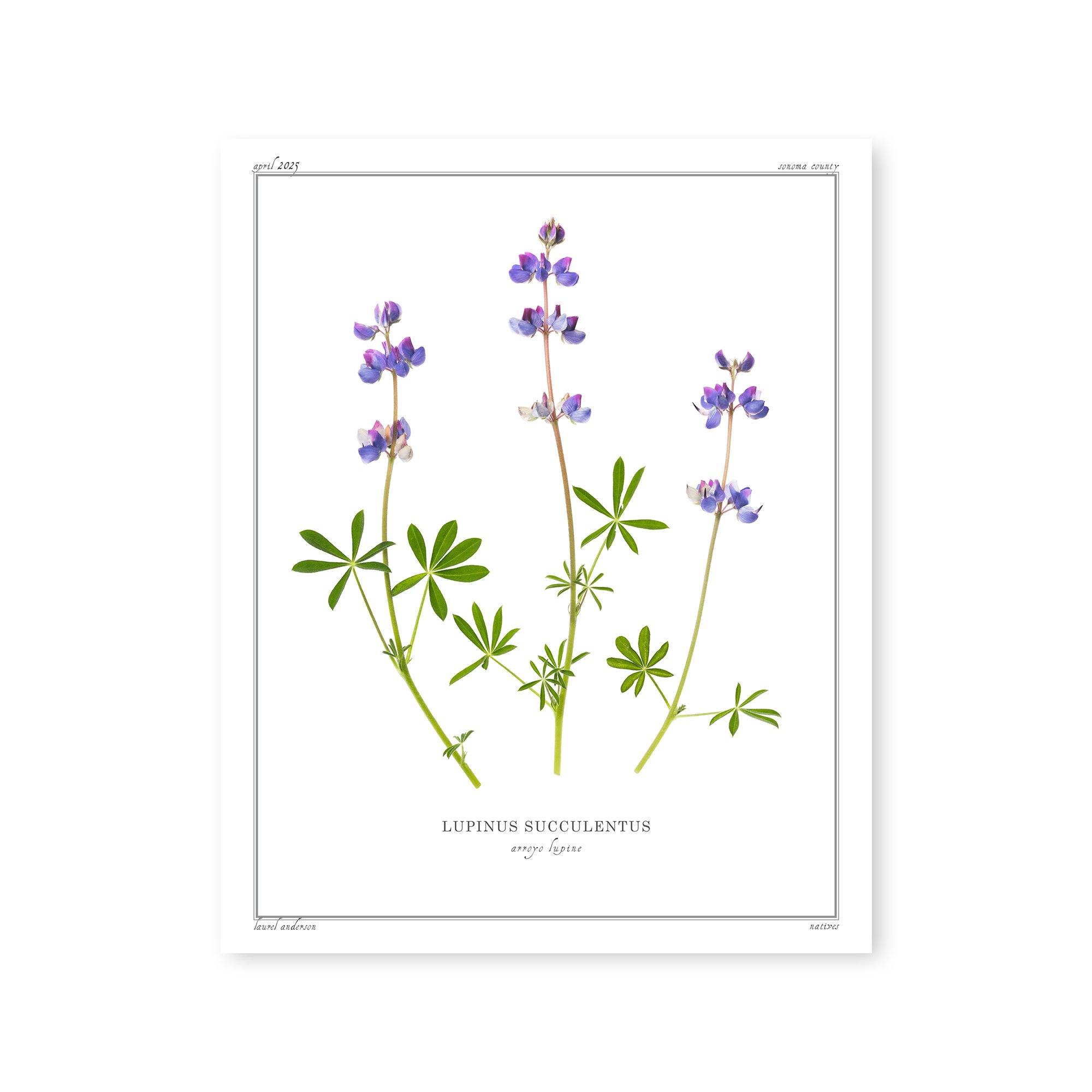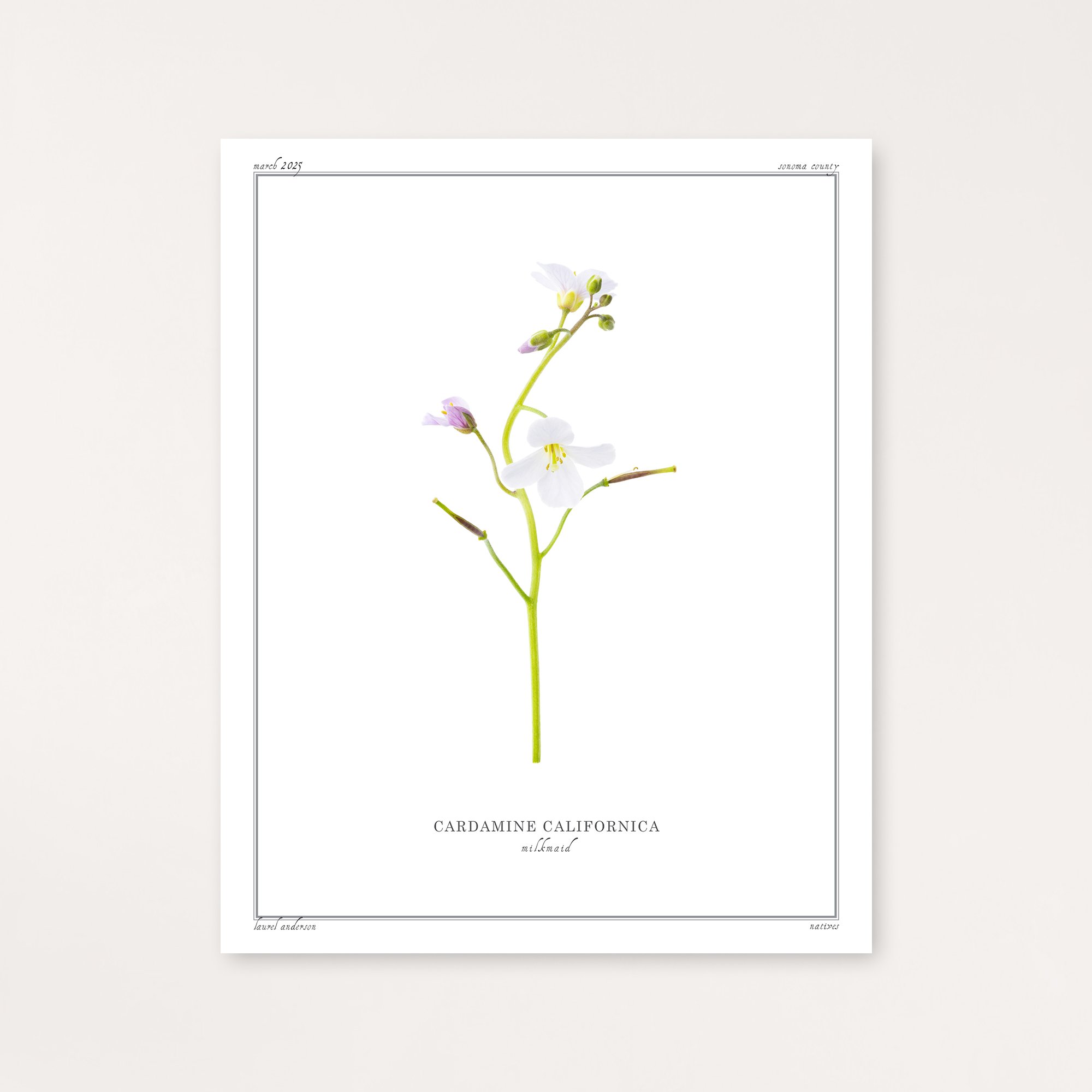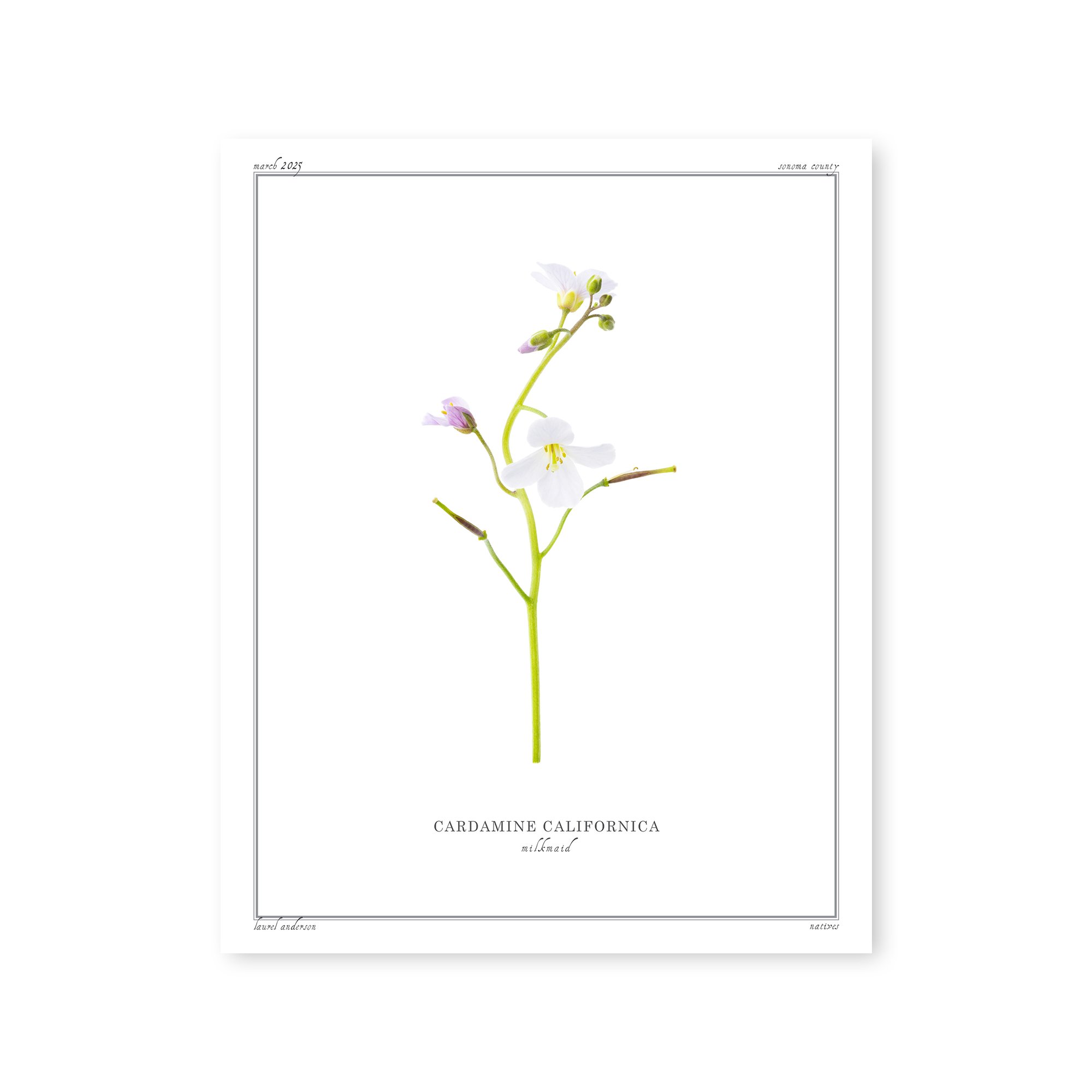 Image 1 of 2
Image 1 of 2

 Image 2 of 2
Image 2 of 2



Bluehead Gilia
Bluehead Gilia, Gilia capitata, grows throughout much of California from coastal scrub to mountain slopes. This variable annual wildflower, with eight recognized subspecies, reaches 10 to 90 centimeters tall with finely divided, fern-like leaves and spherical flower clusters containing 50 to 100 small blue, lavender, pink, or white flowers.
Bluehead Gilia serves as a caterpillar host plant and larval food source for native moths and butterflies, including the fairy moth, Adela singulella. Its abundant nectar attracts yellow-faced bumble bees, Bombus vosnesenskii, native bees, butterflies, and occasionally hummingbirds, which are drawn to the tubular flowers. The dense, globe-shaped flower heads provide an excellent landing platform for pollinators, making it a particularly valuable plant for supporting native bee populations.
Each print is made by the artist using archival quality pigment ink on Moab's Entrada Rag Bright 300 paper.
Bluehead Gilia, Gilia capitata, grows throughout much of California from coastal scrub to mountain slopes. This variable annual wildflower, with eight recognized subspecies, reaches 10 to 90 centimeters tall with finely divided, fern-like leaves and spherical flower clusters containing 50 to 100 small blue, lavender, pink, or white flowers.
Bluehead Gilia serves as a caterpillar host plant and larval food source for native moths and butterflies, including the fairy moth, Adela singulella. Its abundant nectar attracts yellow-faced bumble bees, Bombus vosnesenskii, native bees, butterflies, and occasionally hummingbirds, which are drawn to the tubular flowers. The dense, globe-shaped flower heads provide an excellent landing platform for pollinators, making it a particularly valuable plant for supporting native bee populations.
Each print is made by the artist using archival quality pigment ink on Moab's Entrada Rag Bright 300 paper.










